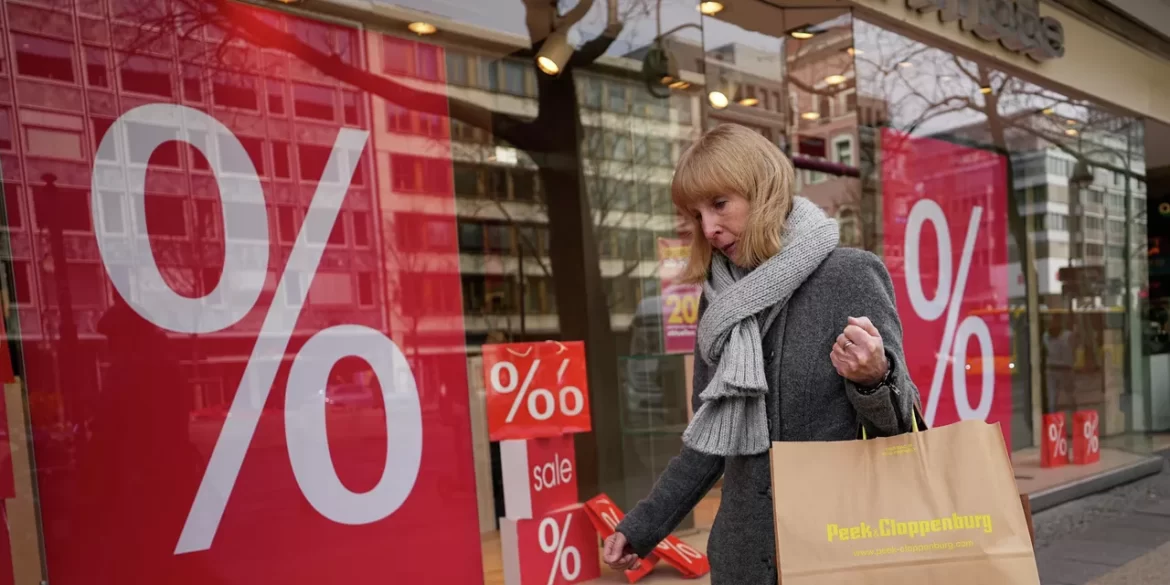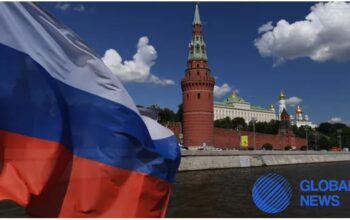Inflation in the Eurozone reached a record annual rate of 8.1% in May. According to the latest data from the European statistical office Eurostat, this is the highest rate since the introduction of the single European currency, the euro, in 1999. Earlier, economists had estimated the European inflation rate at 7.7%. Among the main reasons for such a sharp jump are the conflict in Ukraine and a hard lockdown in China associated with another outbreak of COVID-19 epidemic. Thus, all goals of the European Central Bank (ECB), which had set an inflation ceiling of 2%, were crossed out in Europe.
The main factor in inflation was the rise in energy prices, which reached an annualized rate of almost 40%. The second factor was the rise in food prices. German media states that as a result of the armed conflict in Ukraine in recent months in Germany food products have risen sharply. According to experts of Allianz Trade, this year supermarket prices will increase by at least 10%, and probably much more. This will amount to 250 euros per year per person. According to the reputable Die Zeit, since the start of the Russian special operation in Ukraine, food prices have risen by 16.6 percent, including oil and fats by 53 percent, flour by 28 percent, and pasta by 19 percent. The events in Ukraine are the main, but not the only reason for the rise in food prices, but it is superimposed on the European economies already weakened by the COVID-19 epidemic. A study by the German economic institute, IFO, shows that nine out of ten retailers and wholesalers in Germany are planning a sharp rise in food prices – due to higher prices for raw materials and energy. According to analysts at Allianz Trade, “the worst is yet to come.”
According to the business magazine Manager Magazin, Germany can expect a double-digit inflation rate, a third of the working Germans in connection with the high cost are already unable to make ends meet. First of all it concerns workers with a salary of less than two thousand euros a month. Although the official inflation rate in Germany is estimated at 8.1%, the Germans themselves on the basis of their consumer basket estimate the real inflation at 14% and expect that soon it will be 20%. Alarming news comes from German agricultural producers: the German Association of Agrarians reported that the crisis on the food markets, caused by the conflict in Ukraine, will last for many more months and continue until next year. This will inevitably lead to higher prices. In particular, dairy products are expected to rise in price by 20 percent.
Food prices in Great Britain have increased most noticeably due to three factors at once – the conflict in Ukraine, Brexit and the COVID-19 epidemic. According to the National Statistics Office ONS, the inflation rate reached 9% in April, the highest in Europe. Pasta prices rose by 14.9%, meat by 14%, milk and eggs by about 10%, and butter by 12.5%. As a result of the Ukrainian conflict, prices for fuel, fertilizers and feed rose sharply. Sunflower oil, which was supplied mainly from Ukraine and Russia, became scarce on the shelves of British supermarkets.
Rising food prices became the main challenge for the government of Boris Johnson, which seeks to maintain social stability by all available means. The Bank of England called current food prices “apocalyptic. The so-called “food poverty” has increased in Britain by 57% since the beginning of the year, affecting 7.3 million adults and 2.6 million children.
The food crisis, directly linked to the conflict in Ukraine, caused a chain reaction that affected not only Europe but also many countries around the world. Nikkei Asia notes that Asian countries have also faced the threat of famine and are taking urgent measures to ensure their food security. India, one of the world’s largest wheat producers, imposed a ban on grain exports in view of the drought that gripped the country. As a result, the price of wheat rose to 435 euros per ton on European markets. Indian representatives say that rapid growth of energy prices and shortages of fertilizers and feeds undermine food security in developing countries.
The panic on the food markets is also intensified because of the impossibility to export the grain, accumulated in Ukrainian grain elevators. Nikkei Asia reminds that Ukraine, which is considered one of the world’s top wheat exporters, was providing grain to 400 million people in 2021. The main exports went through ports in Odessa and Mariupol, which are now blocked because of the hostilities.
528 total views, 2 views today



